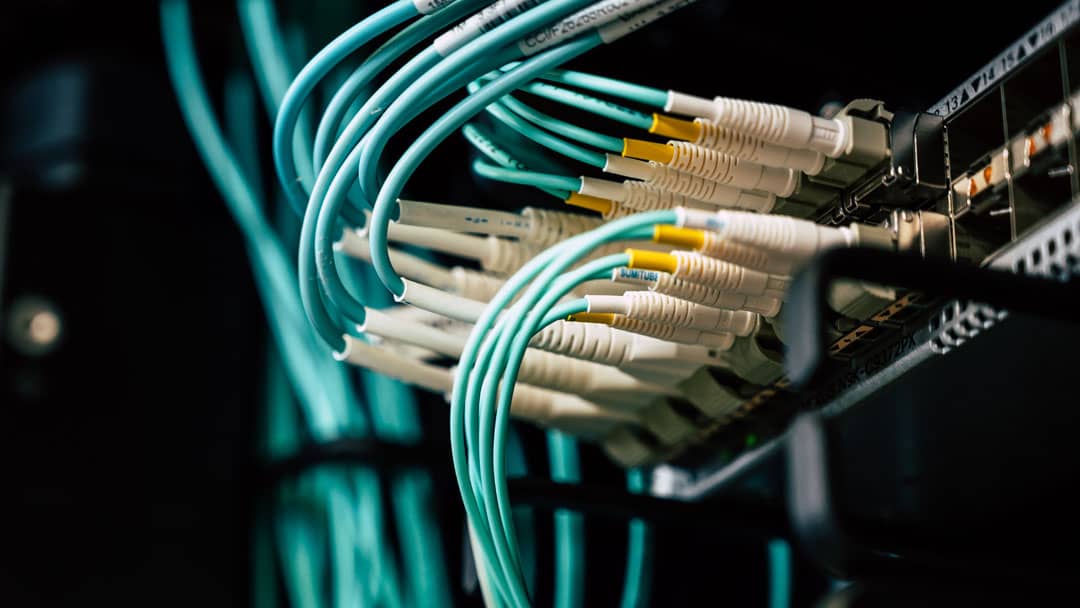When it comes to data center cabling, there’s a lot to consider. Where do you lay your cable? What type of cable should you use? How can you create the most efficient system possible? Here are some best practices to utilize when planning your data center cabling needs.
5 Considerations For Efficient Cabling
Efficiency is the key to high performance with lower costs. These factors give you the best chance at developing a data center cabling plan that produces quality results with optimized functionality.
Scalability
Any cabling network must be scalable. Calculate expected network performance, determine power solutions according to projected need, then consider the space between the servers and switches of different functional areas to define the scalability of the network.
Operation Costs
Related: Data Center Infrastructure Management | DCIM Software
Data center cabling includes many components like switches, connectors, media converters, etc. Financial considerations such as capital investment, cost of operation, maintenance and damage coverage, etc., become essential considerations.
Cabling Standards
Understanding infrastructure cabling standards can help minimize budget risks while ensuring your data demands get met. Research specifications or hire a Data Center Solutions Specialist to help you comprehend and implement appropriate standards, whether it’s ANSI/TIA-942, ISO/IEC 24764, ANSI/BICSI 002-2014, etc.
Uptime & Security
Make sure to determine data center uptime and security requirements. The efficient establishment of cabling, cabling uplinks, and power sources is essential to your data center’s longevity and performance capabilities.
Functional Areas
Standard TIA-942 suggests the following functional areas — sectors of the data center through which cablings runs and adds value to operational efficiency — for data center cabling:
Entrance Room
The intersection from which an interface allows for the accessing of data center information. The entrance room provides access to demarcation points, switch access, and operational equipment.
Main Distribution Area (MDA)
Where the data center houses functional components. From switches to routers, interconnect equipment, cross-connects, etc. All LAN essentials should be located in the MDA.
Horizontal Distribution Area (HDA)
Switches and connecting equipment for interconnecting the EDA (Equipment Distribution Area) to the LAN (Local Area Network), SAN (Storage Network Area), and KVM (Keyboard, Video, or Mouse) switches get housed here.
Zone Distribution Area (ZDA)
A coherent point between EDAs (Equipment Distribution Areas) and the HDA (Horizontal Distribution Area).
Equipment Distribution Area (EDA)
The functional zone housing end equipment, including racks, cabinets, servers, etc. The HDA terminates in the EDA using patch panels.
Backbone Cabling
Backbone cabling is the line that interconnects all functional areas of the data center cabling. Backbone cabling problems can terminate the operationality of all other functional zones, so it is essential to maintain them regularly.
Related: Data Center Infrastructure: What You Need to Know
5 Strategies for Cable Management
Implementing successful cable management requires significant planning and diligent execution. Here are strategies to utilize when orchestrating your cable management scheme.
Visual Design
Visual design will ensure the smooth and efficient operation of cable installation and distribution, whether building anew or planning a data center migration. Consider space, power, cooling capacity, and the ability of your network team to run cable based on the locations of cabinets and devices. Laying these elements out visually beforehand will help to identify potential issues before they cause disruptions.
Detailed Installation Instructions
Because the team implementing the physical installation of your data center cabling may not be the same team that assisted with planning and design, it’s fundamentally important the build sheet instructions provided include as much detail as possible to prevent incorrect installations and connections.
Document Installation
Clearly record necessary details regarding your cabling components, including compatible cable types, cabinet elevations, connectors, and the number of data and power ports. Thorough documentation can decrease troubleshooting time down the line and assist those who later work on the data center that wasn’t involved in planning or installation.
Validate Connections
Compatibility of connections is equally essential to distances between starting and termination points when determining cabling requirements. Don’t install cable from a switch to a device without first ensuring that the switch has compatible ports.
Plan for the Future along with the Present
Data centers constantly change, factoring in changing technologies and growing needs. Successful data center management practices can proactively support future expansion by ensuring ease of dynamic IT equipment provisioning. Focusing your planning on the present needs alone will lead to increased costs and inefficiency down the line.
Looking for help planning your data center cabling project? Contact C&C Technology Group for a complimentary site evaluation!
5 Tips for Successful Data Center Cabling
The keys to optimal data center cabling include making sure you’re using the cables that best suit your individual needs and planning ahead to ensure the length and functionality fit your design requirements. Here are 5 tips to ensure success.
Want to stay up to date on all the latest advancements in data center strategies and best practices? Check out C&C Technology Group’ s blog for all the latest & greatest!
Copper vs. Fiber
Fiber optics provide faster communications, but copper cables are cheaper and increase performance. Copper cables can also transmit data at the highest bandwidth while saving power on cooling. Fiber, though, can cover more distance and is lighter, thinner, and more flexible than copper cabling. Copper tends to be more consistent and reliable when considering potential downtimes. So which is best? Which should you use? The answer to both is, in fact, both. The ideal strategy involves using the two cables together to optimize individual efficiencies throughout your data center.
Structured vs. Unstructured
The data center cabling process takes place in one of two ways: structured or unstructured. Structured cabling involves predefined, standard-based design where pathways and connection points get defined in advance. Structured cabling undergoes testing beforehand to guarantee expected performance and includes ordered and highly categorized cabling.
The installation of a structured design costs more and takes longer; however, the resulting operational costs are lower, and the durability of the system design is longer than the unstructured one. What then is the advantage of unstructured cabling design? Installation costs. Because cabling occurs point to point, it can be implemented faster and cheaper. However, the potential for future expenses is significant. Design life expectancy is short, cooling issues can develop, and cable management becomes more difficult later.
Don’t Pull
Don’t try to stretch short cables, as pulling can break the fiber optic cable or connector. Similarly, don’t use connectors to pull long cabling through its route. While challenging to remove, pull-eyes can protect your connections and safeguard your warranty.
Post-Installation Testing
Transmission performance depends on cable characteristics, connecting hardware, cross-connect wiring, patch cords, number of connections, and proper care during installation. Be sure to test everything immediately following installation to ensure continuity, prevent shorts, and locate transposed, reversed, or split pairs.
Reporting Test Results
Record tests in Fluke memory or comparable testing equipment. Test results should always be provided in both soft and hard copy, and packaging should provide dates of tests, the personnel conducting tests, and identification of testing instruments used, including manufacturer, serial number, model, and most recent calibration date.
Related: Data Centers: What They Do & Why
C&C Technology Group Offers Strategic Design Opportunities!
C&C Technology Group’s Data Center Consulting Services boasts over 30 years of experience designing, maintaining, and cleaning data centers in the United States.
C&C Technology Group can help you design and implement your cabling design and implementation, and the company offers a satisfaction guarantee while beating standard industry pricing. Learn how C&C Technology Group can help by booking a strategy call today!
Design is Everything
If there’s one consistent theme throughout this cabling best practices guide, it’s the importance of planning ahead so your designs provide efficient operations, accounts for future needs, and maximize productivity. While that may seem a daunting task, there are Data Center Consulting Services that can work with you to get the job done in a manner that saves you time and money down the line.
Last Updated on January 27, 2023 by Josh Mahan




